24 feb 2017
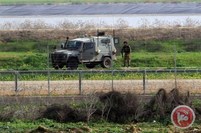
Israeli forces injured a 16-year-old Palestinian with live fire on Friday in the central Gaza Strip near the border between the besieged enclave and Israel.
Spokesperson of the Ministry of Health Ashraf al-Qadra said that the Palestinian was shot by Israeli forces and injured in his right leg. His wounds were described as medium.
Witnesses told Ma’an that Israeli forces stationed at the border fence east of Maghazi refugee camp opened live ammunition on a group of Palestinian youth in the area, causing the injury to the minor.
An Israeli army spokesperson told Ma’an she would look into reports on the incident.
The borders between Gaza and Israel are often the site of violent clashes as Palestinians in Gaza have continued to protest the nearly decade-long Israeli-imposed siege on the small territory. Rights groups have pointed out that the siege has crippled Gaza’s economy, while the UN has warned that the enclave would become uninhabitable by 2020 if Israeli authorities continue their refusal to lift the blockade.
According to UN documentation, at least 178 Palestinians in Gaza were injured by Israeli forces in 2016, while eight Palestinians were killed by Israeli forces during this period, mainly during clashes with Israeli forces along the security barrier between the territory and Israel.
Spokesperson of the Ministry of Health Ashraf al-Qadra said that the Palestinian was shot by Israeli forces and injured in his right leg. His wounds were described as medium.
Witnesses told Ma’an that Israeli forces stationed at the border fence east of Maghazi refugee camp opened live ammunition on a group of Palestinian youth in the area, causing the injury to the minor.
An Israeli army spokesperson told Ma’an she would look into reports on the incident.
The borders between Gaza and Israel are often the site of violent clashes as Palestinians in Gaza have continued to protest the nearly decade-long Israeli-imposed siege on the small territory. Rights groups have pointed out that the siege has crippled Gaza’s economy, while the UN has warned that the enclave would become uninhabitable by 2020 if Israeli authorities continue their refusal to lift the blockade.
According to UN documentation, at least 178 Palestinians in Gaza were injured by Israeli forces in 2016, while eight Palestinians were killed by Israeli forces during this period, mainly during clashes with Israeli forces along the security barrier between the territory and Israel.
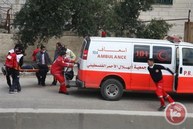
A 13-year-old Palestinian was injured on Friday after a device left over by Israeli forces exploded in an area in the southern part of the occupied West Bank district of Hebron.
Medical sources in the Hebron governmental hospital told Ma’an that Muhammad Salim Kaain suffered from injuries and burns, describing his wounds as medium.
Security sources told Ma’an that the device that had exploded was an Israeli military remnant. However, it was unclear what specific military device it was.
Medical sources in the Hebron governmental hospital told Ma’an that Muhammad Salim Kaain suffered from injuries and burns, describing his wounds as medium.
Security sources told Ma’an that the device that had exploded was an Israeli military remnant. However, it was unclear what specific military device it was.
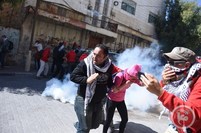
Israeli forces on Friday suppressed a crowded march in the Old City of the southern occupied West Bank district of Hebron, as local Palestinian residents and international activists demanded the reopening of closed streets and the removal of the illegal Israeli settlers from the city.
The march was launched in line with the 23rd anniversary of the Ibrahimi mosque massacre, when Jewish-American settler Baruch Goldstein entered the Ibrahimi mosque in Hebron and shot dead 29 Palestinian Muslims during worship.
Since then, according to the organizers of Friday’s protest -- Veterans For Peace, Youth Against Settlements, and Codepink -- Shuhada street, which was once home to the old city’s main marketplace, has remained almost entirely closed to Palestinians.
The march set off Friday at noon from the al-Sheikh neighborhood and headed towards al-Shalala Street near al-Shuhada Street.
Locals reported that Israeli forces fired tear-gas canisters at protesters, causing some of them to suffer from suffocation.
An Israeli army spokesperson told Ma’an that on Friday “hundreds of Palestinians protested in the Hebron area. A number of protesters hurled rocks at Israeli forces. As a result, soldiers fired tear gas to disperse the riots.”
Located in the center of Hebron -- one of the largest cities in the occupied West Bank, the Old City was divided into Palestinian and Israeli-controlled areas, known as H1 and H2, following the Ibrahimi mosque massacre in 1994.
Some 800 notoriously aggressive Israeli settlers now live under the protection of the Israeli military in the Old City, surrounded by more than 30,000 Palestinians.
While Israel claims to abide by peace agreements regarding the area, the international community has repeatedly slammed Israel for its draconian measures carried out against Palestinians.
Palestinian residents of the Old City face a large Israeli military presence on a daily basis, with at least 20 checkpoints set up at the entrances of many streets, as well as the entrance of the Ibrahimi Mosque itself. Additionally, Palestinians are not allowed to drive on Shuhada street, have had their homes and shops on the street welded shut, and in some areas of the Old City, are not permitted to walk on certain roads.
Meanwhile, according to a statement from the march’s organizers, Israeli settlers move freely on the street, drive cars, and carry machine guns.
“Families on Shuhada Street are not able to buy their food without passing through checkpoints and facing harassment from soldiers and settlers. I hope soon that families living on Shuhada Street are again able to live with the freedom and dignity that has been denied to them for for too long,” said Youth Against Settlements founder Issa Amro.
After Israeli forces suppressed the march, tens of protesters regathered and threw shoes at pictures of US President Donald Trump at the entrance of Shuhada Street.
Local activist Muhammad Zghir said that the demonstration was in protest of Trump ignoring the rights of Palestinians and being bias toward the side of the Israeli government, adding that the shoes were thrown to "express their anger towards Trump's policies, his racism, and disrespect of Muslims and Arabs."
He added that the Palestinian people "would not give up their rights and will continue to fight any international plan that is in the interest of settlements and occupation."
The march was launched in line with the 23rd anniversary of the Ibrahimi mosque massacre, when Jewish-American settler Baruch Goldstein entered the Ibrahimi mosque in Hebron and shot dead 29 Palestinian Muslims during worship.
Since then, according to the organizers of Friday’s protest -- Veterans For Peace, Youth Against Settlements, and Codepink -- Shuhada street, which was once home to the old city’s main marketplace, has remained almost entirely closed to Palestinians.
The march set off Friday at noon from the al-Sheikh neighborhood and headed towards al-Shalala Street near al-Shuhada Street.
Locals reported that Israeli forces fired tear-gas canisters at protesters, causing some of them to suffer from suffocation.
An Israeli army spokesperson told Ma’an that on Friday “hundreds of Palestinians protested in the Hebron area. A number of protesters hurled rocks at Israeli forces. As a result, soldiers fired tear gas to disperse the riots.”
Located in the center of Hebron -- one of the largest cities in the occupied West Bank, the Old City was divided into Palestinian and Israeli-controlled areas, known as H1 and H2, following the Ibrahimi mosque massacre in 1994.
Some 800 notoriously aggressive Israeli settlers now live under the protection of the Israeli military in the Old City, surrounded by more than 30,000 Palestinians.
While Israel claims to abide by peace agreements regarding the area, the international community has repeatedly slammed Israel for its draconian measures carried out against Palestinians.
Palestinian residents of the Old City face a large Israeli military presence on a daily basis, with at least 20 checkpoints set up at the entrances of many streets, as well as the entrance of the Ibrahimi Mosque itself. Additionally, Palestinians are not allowed to drive on Shuhada street, have had their homes and shops on the street welded shut, and in some areas of the Old City, are not permitted to walk on certain roads.
Meanwhile, according to a statement from the march’s organizers, Israeli settlers move freely on the street, drive cars, and carry machine guns.
“Families on Shuhada Street are not able to buy their food without passing through checkpoints and facing harassment from soldiers and settlers. I hope soon that families living on Shuhada Street are again able to live with the freedom and dignity that has been denied to them for for too long,” said Youth Against Settlements founder Issa Amro.
After Israeli forces suppressed the march, tens of protesters regathered and threw shoes at pictures of US President Donald Trump at the entrance of Shuhada Street.
Local activist Muhammad Zghir said that the demonstration was in protest of Trump ignoring the rights of Palestinians and being bias toward the side of the Israeli government, adding that the shoes were thrown to "express their anger towards Trump's policies, his racism, and disrespect of Muslims and Arabs."
He added that the Palestinian people "would not give up their rights and will continue to fight any international plan that is in the interest of settlements and occupation."
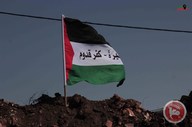
Israeli forces suppressed weekly marches in the occupied West Bank districts of Ramallah and Qalqiliya on Friday, as two Palestinians, including a child, were injured with rubber bullets, while tens of Palestinians suffered tear gas inhalation.
In the village of Kafr Qaddum in Qalqiliya, two Palestinians, including a child, were injured with rubber-coated bullets as Israeli forces suppressed the village’s weekly march against Israeli settlements and the opening of the village’s main entrance which has been closed by Israeli forces for 14 years.
Coordinator of the popular resistance in the village Murad Shteiwi said that Israeli forces fired tear gas canisters and rubber-coated bullets, injuring Muhammad Hilme, 11, in the neck with a rubber bullet and Abdullah Salim, 26, in the leg with a rubber bullet. Salim works as a photographer for the Israeli rights group B’Tselem.
Shteiwi said that nine Palestinians had also suffered from tear gas inhalation.
Shteiwi added that the clashes erupted when Israeli forces raided the village and “heavily fired” rubber bullets and tear gas canisters at protesters.
He also noted that the march was launched with wide participation of Palestinians demanding an end to the nearly half century Israeli occupation, while voicing support for the Palestinian Authority (PA) which the he said was the “only legitimate representative of the Palestinian people.”
Residents of Kafr Qaddum began staging weekly protests in 2011 against land confiscations, as well as the closure of the village's southern road by Israeli forces. The road, which has been closed for 14 years, is the main route to the nearby city of Nablus, the nearest economic center.
The Israeli army blocked off the road after expanding the illegal Israeli settlement of Kedumim in 2003, forcing village residents to take a bypass road in order to travel to Nablus, which has extended the travel time to Nablus from 15 minutes to 40 minutes, according to Israeli rights group B’Tselem.
Hundreds of Palestinians have been detained during the demonstrations since their start in 2011, and at least 84 protesters have been injured by live fire, including 12 children, Shteiwi told Ma'an during a similar protest last year.
Some 120 others have been detained at demonstrations and were subsequently held in Israeli custody for periods ranging between four and 24 months, Shteiwi said at the time, adding that they have paid fines totaling some 25,000 shekels (approximately $6,488).
Over the course of five years, an elderly protester was killed after suffering from excessive tear gas inhalation, one youth lost his eyesight, and another his ability to speak, he added.
In December, Israeli forces became the focus of international condemnation when Israeli soldiers wearing matching plain clothes and black ski masks detained a seven-year-old Palestinian during a weekly protest in the village.
A video of the incident was taken by a volunteer of B’Tselem and quickly went viral. Rights groups and activists pointed out that the video seems to show the soldiers using the child as a human shield during clashes.
B’Tselem strongly condemned the incident at the time, saying that “it does not take a lawyer to know that the detention of a seven-year-old child by soldiers, keeping him by their side as they shoot at his friends, is deplorable and utterly unacceptable."
Meanwhile, in the village of Bilin in Ramallah, Israeli forces also suppressed the village’s weekly march against Israeli settlements and occupation.
The march included the participation of both Palestinians and international peace activists.
The protesters held Palestinian flags and weaved through the village’s streets calling for national unity, the immediate release of Palestinian prisoners, and ending the Israeli occupation.
Protesters headed toward Israel’s separation wall in the village, where some Palestinian youths climbed to the top of the wall and raised the Palestinian flag, while Israeli forces shot tear gas canisters at the protesters.
Coordinator of the popular resistance in Bilin Ratab Abu Rahma said that a Norwegian delegation visited Bilin and also participated in the Friday march to support the Palestinian people and their struggle.
Abu Rahma added that the delegation was given a detailed explanation of the situation in Bilin and the village’s longstanding resistance against the Israeli occupation.
Bilin is one of the most active Palestinian villages in peaceful organized opposition against Israeli policies, as residents have protested every Friday for 12 years, and have often been met with tear gas, rubber-coated steel bullets, and stun grenades from Israeli forces.
Nearby Bilin, another weekly march was held in the village of Nilin where protesters marched against Israeli settlements, land confiscations, and in commemoration of the 23rd anniversary of the Ibrahimi Mosque massacre.
Israeli forces stationed behind the separation wall fired tear gas canisters at protesters, causing a number of Palestinian and international peace activists to suffer from tear gas inhalation.
Protesters held Palestinian flags and demanded the destruction of the separation wall, ending the Israeli occupation, and halting Israeli settlement expansion.
Member of the popular resistance Muhammad Ameira said that six international supporters and tend of Palestinians participated in the march, which has been considered a “weekly tradition for years.”
An Israeli army spokesperson told Ma'an she would look into reports on each of the protests.
In the village of Kafr Qaddum in Qalqiliya, two Palestinians, including a child, were injured with rubber-coated bullets as Israeli forces suppressed the village’s weekly march against Israeli settlements and the opening of the village’s main entrance which has been closed by Israeli forces for 14 years.
Coordinator of the popular resistance in the village Murad Shteiwi said that Israeli forces fired tear gas canisters and rubber-coated bullets, injuring Muhammad Hilme, 11, in the neck with a rubber bullet and Abdullah Salim, 26, in the leg with a rubber bullet. Salim works as a photographer for the Israeli rights group B’Tselem.
Shteiwi said that nine Palestinians had also suffered from tear gas inhalation.
Shteiwi added that the clashes erupted when Israeli forces raided the village and “heavily fired” rubber bullets and tear gas canisters at protesters.
He also noted that the march was launched with wide participation of Palestinians demanding an end to the nearly half century Israeli occupation, while voicing support for the Palestinian Authority (PA) which the he said was the “only legitimate representative of the Palestinian people.”
Residents of Kafr Qaddum began staging weekly protests in 2011 against land confiscations, as well as the closure of the village's southern road by Israeli forces. The road, which has been closed for 14 years, is the main route to the nearby city of Nablus, the nearest economic center.
The Israeli army blocked off the road after expanding the illegal Israeli settlement of Kedumim in 2003, forcing village residents to take a bypass road in order to travel to Nablus, which has extended the travel time to Nablus from 15 minutes to 40 minutes, according to Israeli rights group B’Tselem.
Hundreds of Palestinians have been detained during the demonstrations since their start in 2011, and at least 84 protesters have been injured by live fire, including 12 children, Shteiwi told Ma'an during a similar protest last year.
Some 120 others have been detained at demonstrations and were subsequently held in Israeli custody for periods ranging between four and 24 months, Shteiwi said at the time, adding that they have paid fines totaling some 25,000 shekels (approximately $6,488).
Over the course of five years, an elderly protester was killed after suffering from excessive tear gas inhalation, one youth lost his eyesight, and another his ability to speak, he added.
In December, Israeli forces became the focus of international condemnation when Israeli soldiers wearing matching plain clothes and black ski masks detained a seven-year-old Palestinian during a weekly protest in the village.
A video of the incident was taken by a volunteer of B’Tselem and quickly went viral. Rights groups and activists pointed out that the video seems to show the soldiers using the child as a human shield during clashes.
B’Tselem strongly condemned the incident at the time, saying that “it does not take a lawyer to know that the detention of a seven-year-old child by soldiers, keeping him by their side as they shoot at his friends, is deplorable and utterly unacceptable."
Meanwhile, in the village of Bilin in Ramallah, Israeli forces also suppressed the village’s weekly march against Israeli settlements and occupation.
The march included the participation of both Palestinians and international peace activists.
The protesters held Palestinian flags and weaved through the village’s streets calling for national unity, the immediate release of Palestinian prisoners, and ending the Israeli occupation.
Protesters headed toward Israel’s separation wall in the village, where some Palestinian youths climbed to the top of the wall and raised the Palestinian flag, while Israeli forces shot tear gas canisters at the protesters.
Coordinator of the popular resistance in Bilin Ratab Abu Rahma said that a Norwegian delegation visited Bilin and also participated in the Friday march to support the Palestinian people and their struggle.
Abu Rahma added that the delegation was given a detailed explanation of the situation in Bilin and the village’s longstanding resistance against the Israeli occupation.
Bilin is one of the most active Palestinian villages in peaceful organized opposition against Israeli policies, as residents have protested every Friday for 12 years, and have often been met with tear gas, rubber-coated steel bullets, and stun grenades from Israeli forces.
Nearby Bilin, another weekly march was held in the village of Nilin where protesters marched against Israeli settlements, land confiscations, and in commemoration of the 23rd anniversary of the Ibrahimi Mosque massacre.
Israeli forces stationed behind the separation wall fired tear gas canisters at protesters, causing a number of Palestinian and international peace activists to suffer from tear gas inhalation.
Protesters held Palestinian flags and demanded the destruction of the separation wall, ending the Israeli occupation, and halting Israeli settlement expansion.
Member of the popular resistance Muhammad Ameira said that six international supporters and tend of Palestinians participated in the march, which has been considered a “weekly tradition for years.”
An Israeli army spokesperson told Ma'an she would look into reports on each of the protests.
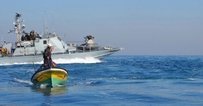
Israeli navy ships opened fire, earlier Friday, targeting several Palestinian fishing boats, in Palestinian territorial waters in three areas, in the southern and northern parts of the Gaza Strip.
Eyewitnesses said the navy fired dozens of rounds at fishing boats in Palestinian waters in Rafah and Khan Younis, in the southern part of the Gaza Strip, and in northern Gaza, causing damage and forcing the fishers back to shore.
Such attacks, also carried out by soldiers against farmers and workers in Palestinian lands close to the border fence, are conducted daily in the besieged and improvised parts of the coastal region.
On Tuesday, the navy attacked several fishing boats, and abducted five fishers from the same family. The Palestinian Center for Human Rights (PCHR), based on Gaza, issued a statement denouncing the attack, and the ongoing Israeli violations against the Palestinians in the Gaza Strip.
Eyewitnesses said the navy fired dozens of rounds at fishing boats in Palestinian waters in Rafah and Khan Younis, in the southern part of the Gaza Strip, and in northern Gaza, causing damage and forcing the fishers back to shore.
Such attacks, also carried out by soldiers against farmers and workers in Palestinian lands close to the border fence, are conducted daily in the besieged and improvised parts of the coastal region.
On Tuesday, the navy attacked several fishing boats, and abducted five fishers from the same family. The Palestinian Center for Human Rights (PCHR), based on Gaza, issued a statement denouncing the attack, and the ongoing Israeli violations against the Palestinians in the Gaza Strip.
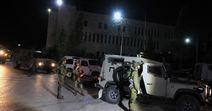
At least four Palestinians were kidnapped by the Israeli occupation forces (IOF) at daybreak Friday during assaults on the West Bank and Jerusalem.
According to a PIC news correspondent, dozens of Israeli soldiers and policemen stormed Bartaa’s market, to the west of the northern West Bank province of Jenin, and ravaged Palestinian commercial shops.
The Israeli soldiers kidnapped the Palestinian citizen Mohamed Makhzoumi after they wreaked havoc on his shop and seized all the commodities.
At the same time, two Palestinian youths, one among whom from the Nakhla family, were kidnapped by the IOF from al-Jalazoun refugee camp, north of Ramallah and al-Bireh province.
According to local sources, the occupation troops broke into civilian homes in the camp.
At predawn time, the IOF kidnapped the Palestinian youth Tahseen al-Haj from his workplace in 1948 occupied territories.
Meanwhile, clashes burst out between the Israeli forces and the Palestinian anti-occupation youth shortly after a flock of Israeli military jeeps rolled into Jerusalem’s eastern town of Hizma.
The Israeli soldiers attacked the Palestinian protesters with heavy spates of teargas canisters, resulting in several suffocation cases.
According to a PIC news correspondent, dozens of Israeli soldiers and policemen stormed Bartaa’s market, to the west of the northern West Bank province of Jenin, and ravaged Palestinian commercial shops.
The Israeli soldiers kidnapped the Palestinian citizen Mohamed Makhzoumi after they wreaked havoc on his shop and seized all the commodities.
At the same time, two Palestinian youths, one among whom from the Nakhla family, were kidnapped by the IOF from al-Jalazoun refugee camp, north of Ramallah and al-Bireh province.
According to local sources, the occupation troops broke into civilian homes in the camp.
At predawn time, the IOF kidnapped the Palestinian youth Tahseen al-Haj from his workplace in 1948 occupied territories.
Meanwhile, clashes burst out between the Israeli forces and the Palestinian anti-occupation youth shortly after a flock of Israeli military jeeps rolled into Jerusalem’s eastern town of Hizma.
The Israeli soldiers attacked the Palestinian protesters with heavy spates of teargas canisters, resulting in several suffocation cases.
23 feb 2017
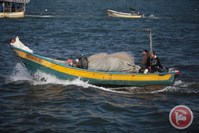
Israeli naval forces opened fire at Palestinian fishermen in the northern Gaza Strip on Thursday morning, while army bulldozers crossed the borderline of the besieged coastal enclave.
Israeli army ships deployed off the coasts of Beit Lahiya and Gaza City fired in the direction of fishermen, locals told Ma’an. No injuries were reported.
Meanwhile, four Israeli bulldozers escorted by drones flying overhead entered the central Gaza Strip east of Deir al-Balah on Thursday morning, witnesses told Ma’an.
An Israeli army spokesperson told Ma’an that they were looking into the reports.
The incidents took place two days after a Palestinian fisherman was shot in the back and critically injured while being detained by Israeli forces.
Israeli military incursions inside the besieged Gaza Strip and near the “buffer zone" which lies on both land and sea sides of Gaza, have long been a near-daily occurrence.
Palestinians who work near the “buffer zone” often come under fire from military forces, as the Israeli military has not made clear the precise area of the designated zone. The practice has in effect destroyed much of the agricultural and fishing sectors of the blockaded coastal enclave.
Israeli army ships deployed off the coasts of Beit Lahiya and Gaza City fired in the direction of fishermen, locals told Ma’an. No injuries were reported.
Meanwhile, four Israeli bulldozers escorted by drones flying overhead entered the central Gaza Strip east of Deir al-Balah on Thursday morning, witnesses told Ma’an.
An Israeli army spokesperson told Ma’an that they were looking into the reports.
The incidents took place two days after a Palestinian fisherman was shot in the back and critically injured while being detained by Israeli forces.
Israeli military incursions inside the besieged Gaza Strip and near the “buffer zone" which lies on both land and sea sides of Gaza, have long been a near-daily occurrence.
Palestinians who work near the “buffer zone” often come under fire from military forces, as the Israeli military has not made clear the precise area of the designated zone. The practice has in effect destroyed much of the agricultural and fishing sectors of the blockaded coastal enclave.
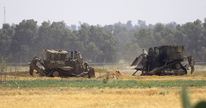
Israeli military bulldozers at daybreak Thursday launched a limited incursion into the eastern corners of Deir al-Balah province, in central Gaza Strip.
A PIC news correspondent said four Israeli army bulldozers deployed at the Kissufim military base moved a few meters into eastern Deir al-Balah province, in the blockaded Gaza Strip.
Heavy damage is often wrought by such arbitrary incursions on Palestinian cultivated land tracts near the border fence.
A PIC news correspondent said four Israeli army bulldozers deployed at the Kissufim military base moved a few meters into eastern Deir al-Balah province, in the blockaded Gaza Strip.
Heavy damage is often wrought by such arbitrary incursions on Palestinian cultivated land tracts near the border fence.
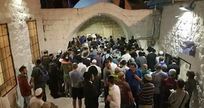
Hundreds of Israeli settlers stormed at daybreak Thursday Joseph’s Tomb, in eastern Nablus province, at the same time as Israeli soldiers rummaged into Palestinian homes in the area.
Buses carrying Israeli settlers flocked to Hawara checkpoint, south of Nablus, before they headed to Joseph’s Tomb via Beit Furik checkpoint.
The Israeli settlers performed sacrilegious rituals and yelled anti-Arab slogans, sparking tension in the area.
At the same time, Israeli army troops cordoned off Nablus’s eastern corners and have been deployed at the main entrance to Balata Camp.
The Israeli forces further wreaked havoc on civilian homes in Balata on claims that a military patrol was targeted with gunfire.
Palestinian vehicles driving in the area have also been stopped and inspected by the occupation soldiers in search for alleged weapons.
Violent clashes burst out between the Israeli troops and the Palestinian anti-occupation protesters. An Israeli soldier reportedly sustained wounds in the confrontations.
Meanwhile, the Israeli forces broke into Askar al-Jadid Camp and kidnapped two Palestinian youngsters.
Buses carrying Israeli settlers flocked to Hawara checkpoint, south of Nablus, before they headed to Joseph’s Tomb via Beit Furik checkpoint.
The Israeli settlers performed sacrilegious rituals and yelled anti-Arab slogans, sparking tension in the area.
At the same time, Israeli army troops cordoned off Nablus’s eastern corners and have been deployed at the main entrance to Balata Camp.
The Israeli forces further wreaked havoc on civilian homes in Balata on claims that a military patrol was targeted with gunfire.
Palestinian vehicles driving in the area have also been stopped and inspected by the occupation soldiers in search for alleged weapons.
Violent clashes burst out between the Israeli troops and the Palestinian anti-occupation protesters. An Israeli soldier reportedly sustained wounds in the confrontations.
Meanwhile, the Israeli forces broke into Askar al-Jadid Camp and kidnapped two Palestinian youngsters.
22 feb 2017
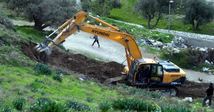
The Israeli Occupation Forces (IOF) evacuated Wednesday morning Palestinian families in the Khirbet Tana hamlet in the occupied West Bank district of Nablus to carry out military drills in the area.
Local sources told the PIC reporter that 30 Palestinian families were forced by Israeli soldiers to leave their homes since the early morning hours under the pretext of carrying out military exercises.
The families were brutally attacked during the evacuation process, the sources added.
Khirbet Tana area, where 300 Palestinians live, has been demolished for three times by Israeli forces over the past year.
Local sources told the PIC reporter that 30 Palestinian families were forced by Israeli soldiers to leave their homes since the early morning hours under the pretext of carrying out military exercises.
The families were brutally attacked during the evacuation process, the sources added.
Khirbet Tana area, where 300 Palestinians live, has been demolished for three times by Israeli forces over the past year.

The Israeli Occupation Authorities (IOA) released overnight five Palestinian fishermen who were detained on Tuesday.
Local sources affirmed that four fishermen were released all together via Erez crossing late yesterday while another one was later released in very critical condition as he suffers gunshot injuries in his back.
Earlier Tuesday, Israeli Naval Forces arrested five Palestinian fishermen off Gaza shores.
Israeli forces regularly open fires on Palestinian fishermen and farmers along the border areas, despite a ceasefire agreement that ended Israel’s 2014 aggression.
Local sources affirmed that four fishermen were released all together via Erez crossing late yesterday while another one was later released in very critical condition as he suffers gunshot injuries in his back.
Earlier Tuesday, Israeli Naval Forces arrested five Palestinian fishermen off Gaza shores.
Israeli forces regularly open fires on Palestinian fishermen and farmers along the border areas, despite a ceasefire agreement that ended Israel’s 2014 aggression.
